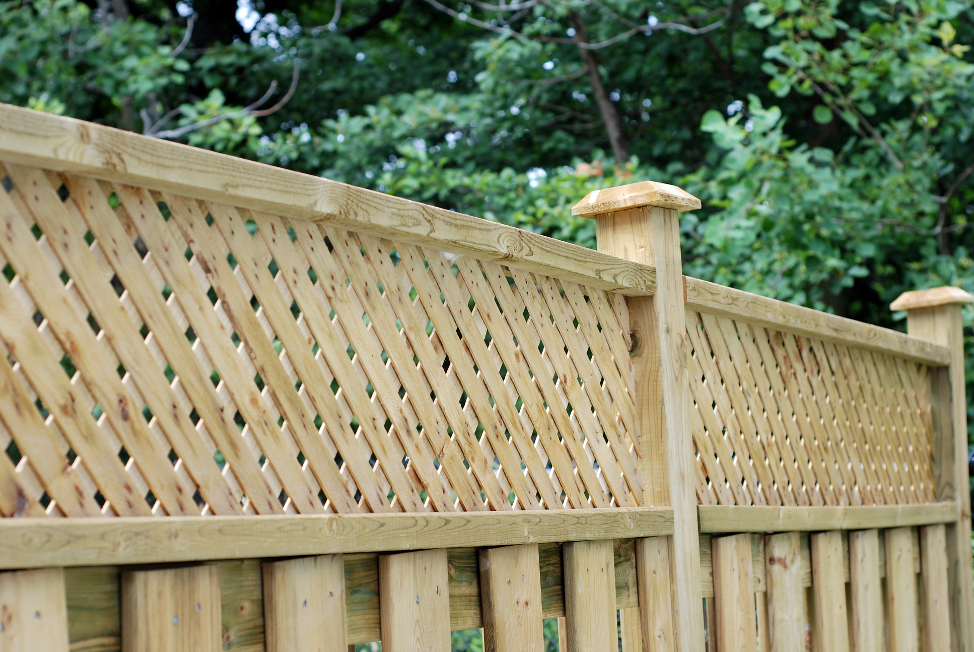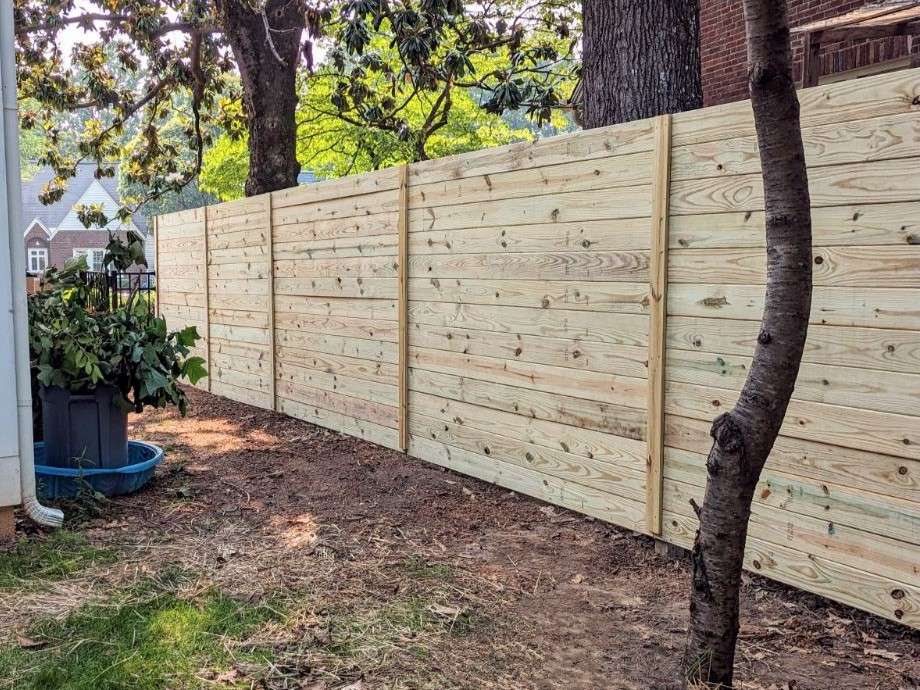All Categories
Featured
When it pertains to securing your property, picking the right fencing height is just one of the most important variables to think about. A fence's height can substantially affect its ability to discourage invaders, safeguard your privacy, and boost the general safety and security of your home or organization. Nonetheless, picking the ideal elevation calls for mindful consideration of a number of variables, including local policies, your protection requires, and the sort of fencing material you pick. Right here's an overview to help you make the ideal decision when determining your fencing elevation for optimal security.
![]()
In some locations, you may additionally need a license for fencings taller than a certain height. In addition, make certain you understand any neighborhood standards, especially if you reside in an area with a property owners' organization (HOA) that imposes particular guidelines on fencing material, design, and height.
The objective is to make it challenging for any individual to conveniently breach the fence or scale. Taller fences reduce the risk of break-ins, specifically when combined with various other deterrents like sharp articles or trellis extensions on top. If your home is located in a high-crime location or you are worried about invaders, deciding for a taller fencing can considerably boost your assurance.
![]()
Wrought Iron Fencings: These are typically 6 to 8 feet high and are ideal for safety and security objectives. The stamina and durability of wrought iron make it tough for trespassers to appear or climb. Wooden Fencings: While wood fences supply privacy, their security depends on their height and design. A strong wood fence that goes to the very least 6 feet tall can act as a strong obstacle, however including features like anti-climb tops can boost its safety. Chain-Link Fences: Chain-link fences are often chosen for their cost-effectiveness and strength. To enhance safety and security, many homeowners include barbed or razor wire to the top of the fencing or raise its elevation to 8 feet or more. When picking a product, consider the trade-offs in between visual allure and security. Products like timber or plastic provide privacy yet could not be as tough to climb up as steel fences, while wrought iron or steel fencings offer longevity and enhanced safety.
On the other hand, if presence is a priority-- particularly for monitoring functions or to ensure that next-door neighbors can see questionable task-- after that a shorter, more clear fencing might be excellent. Chain-link fences, while supplying less personal privacy, permit better presence, making it much easier for next-door neighbors or passersby to detect anybody trying to breach your fence.
Anti-Climb Attributes: Add trellis extensions, directed tops, or barbed cord to make it harder for burglars to scale the fence. Motion Sensors and Monitoring Cameras: Positioning video cameras along your fencing line or setting up motion detectors can aid determine suspicious task and additionally prevent trespassers. Electric Fencing: For higher levels of protection, think about including an electric fencing to your existing fencing. These systems are designed to supply a mild shock to anybody who attempts to climb up the fencing or touch. 6. Take Into Consideration Aesthetic Appeals and Area Impact. While safety is the main issue, it's additionally essential to take into consideration the aesthetics of your fence, particularly if you reside in a neighborhood with a solid sense of neighborhood. A fencing that is as well high or enforcing can produce an unfriendly atmosphere and may not be well-received by next-door neighbors.
Consider your neighborhood's overall visual and choose a fence elevation that stabilizes both safety and security and aesthetic allure. A fencing that is aesthetically appealing while still supplying adequate security can boost both the appearance and the security of your building.
Verdict. Selecting the ideal fence height for optimal safety requires balancing functionality, aesthetics, and neighborhood policies. In basic, a fence elevation of 6 to 8 feet is ideal for supplying sufficient security versus invaders, though taller fences can be used for added protection if required. The product of your fencing additionally plays a substantial function in its ability to deter burglars. By considering your privacy needs, neighborhood standards, and additional security functions, you can make an educated choice that not just safeguards your property but additionally boosts its general allure.
- Understand Local Rules and Zoning Laws. Prior to you choose a fence elevation, it's necessary to contact your local municipality or home owners' association to guarantee that you're in conformity with neighborhood zoning regulations and policies. Most locations have constraints on the height of fences, specifically in front backyards or along building lines. Domestic fences in front backyards are frequently restricted to an elevation of 3 to 4 feet, while backyard fences can be higher-- commonly up to 6 to 8 feet or more.

In some locations, you may additionally need a license for fencings taller than a certain height. In addition, make certain you understand any neighborhood standards, especially if you reside in an area with a property owners' organization (HOA) that imposes particular guidelines on fencing material, design, and height.
- Consider Your Safety Demands. The height of your fencing plays a vital role in the degree of protection it gives. A fencing that is as well short may be very easy to climb up or jump over, while a taller fence can serve as a stronger deterrent against trespassers. For optimum safety, think about a fencing elevation of at the very least 6 feet, with lots of homeowners opting for 8-foot fencings or higher when safety and security is a leading concern.
The objective is to make it challenging for any individual to conveniently breach the fence or scale. Taller fences reduce the risk of break-ins, specifically when combined with various other deterrents like sharp articles or trellis extensions on top. If your home is located in a high-crime location or you are worried about invaders, deciding for a taller fencing can considerably boost your assurance.
- Choose the Right Fencing Material. The material of the fence you choose also influences the safety it provides. Some materials give even more durable defense than others, also at the exact same height. :

Wrought Iron Fencings: These are typically 6 to 8 feet high and are ideal for safety and security objectives. The stamina and durability of wrought iron make it tough for trespassers to appear or climb. Wooden Fencings: While wood fences supply privacy, their security depends on their height and design. A strong wood fence that goes to the very least 6 feet tall can act as a strong obstacle, however including features like anti-climb tops can boost its safety. Chain-Link Fences: Chain-link fences are often chosen for their cost-effectiveness and strength. To enhance safety and security, many homeowners include barbed or razor wire to the top of the fencing or raise its elevation to 8 feet or more. When picking a product, consider the trade-offs in between visual allure and security. Products like timber or plastic provide privacy yet could not be as tough to climb up as steel fences, while wrought iron or steel fencings offer longevity and enhanced safety.
- Privacy and Visibility Factors To Consider. If personal privacy is a substantial issue, particularly in domestic locations, you might like a taller fence that obstructs the view from the outside. Solid wood or vinyl fences that are 6 to 8 feet high can prevent others from seeing right into your residential property, which assists increase protection by minimizing the possibility of trespassers looking your home.
On the other hand, if presence is a priority-- particularly for monitoring functions or to ensure that next-door neighbors can see questionable task-- after that a shorter, more clear fencing might be excellent. Chain-link fences, while supplying less personal privacy, permit better presence, making it much easier for next-door neighbors or passersby to detect anybody trying to breach your fence.
- Added Security Attributes to Enhance Elevation. While elevation is a vital component of protection, it is essential to bear in mind that a high fencing alone may not be adequate to prevent identified trespassers. Think about integrating your fence with other safety functions for optimum security:
Anti-Climb Attributes: Add trellis extensions, directed tops, or barbed cord to make it harder for burglars to scale the fence. Motion Sensors and Monitoring Cameras: Positioning video cameras along your fencing line or setting up motion detectors can aid determine suspicious task and additionally prevent trespassers. Electric Fencing: For higher levels of protection, think about including an electric fencing to your existing fencing. These systems are designed to supply a mild shock to anybody who attempts to climb up the fencing or touch. 6. Take Into Consideration Aesthetic Appeals and Area Impact. While safety is the main issue, it's additionally essential to take into consideration the aesthetics of your fence, particularly if you reside in a neighborhood with a solid sense of neighborhood. A fencing that is as well high or enforcing can produce an unfriendly atmosphere and may not be well-received by next-door neighbors.
Consider your neighborhood's overall visual and choose a fence elevation that stabilizes both safety and security and aesthetic allure. A fencing that is aesthetically appealing while still supplying adequate security can boost both the appearance and the security of your building.
Verdict. Selecting the ideal fence height for optimal safety requires balancing functionality, aesthetics, and neighborhood policies. In basic, a fence elevation of 6 to 8 feet is ideal for supplying sufficient security versus invaders, though taller fences can be used for added protection if required. The product of your fencing additionally plays a substantial function in its ability to deter burglars. By considering your privacy needs, neighborhood standards, and additional security functions, you can make an educated choice that not just safeguards your property but additionally boosts its general allure.
Latest Posts
Create a Safe and Beautiful Boundary with Washington Fence
Published Feb 22, 25
1 min read
Enhance Your Residential or Commercial Space with Expert Fencing
Published Feb 20, 25
1 min read
Easy Treatment, Long-Lasting Results-- Maintain Your Bathroom Fitter Products!
Published Feb 20, 25
4 min read
More
Latest Posts
Create a Safe and Beautiful Boundary with Washington Fence
Published Feb 22, 25
1 min read
Enhance Your Residential or Commercial Space with Expert Fencing
Published Feb 20, 25
1 min read
Easy Treatment, Long-Lasting Results-- Maintain Your Bathroom Fitter Products!
Published Feb 20, 25
4 min read